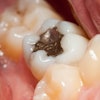
Ever since the pandemic occurred, I have identified "recovery" as the No. 1 area where dental practices need to focus. There is a robust body of academic work, done over the years, that recommends focusing on fewer essential areas of the business or practice as the best way to turn it around. While that may seem counterintuitive (focusing on less, rather than more), concentrating on the essentials will ensure a faster, better, and deeper recovery.

Go beyond the traditional definition of "reactivating patients." Prior to COVID-19, reactivation focused on contacting patients who hadn't been in the practice for 18 months. Reactivation now includes any and all patients who do not have their next scheduled appointment.

Don't forget about cancellations and no-shows. Practices must clearly communicate how important it is that patients keep appointments and contact the practice 48 hours in advance if they must cancel. Practices should also create a set of scripts for communicating the consequences of not showing up at all. Although the goal is never to lose patients, Levin Group's study of "habitual" no-show patients from the past 10 years shows that they cause practices to lose money.
Dr. Roger P. Levin is the CEO of Levin Group, a leading dental management consulting firm, and one of the most sought-after speakers in dentistry. Levin has authored 65 books and more than 4,000 articles on dental practice management and marketing. You can sign up for the Levin Group Tip of the Day.
The comments and observations expressed herein do not necessarily reflect the opinions of DrBicuspid.com, nor should they be construed as an endorsement or admonishment of any particular idea, vendor, or organization.

















